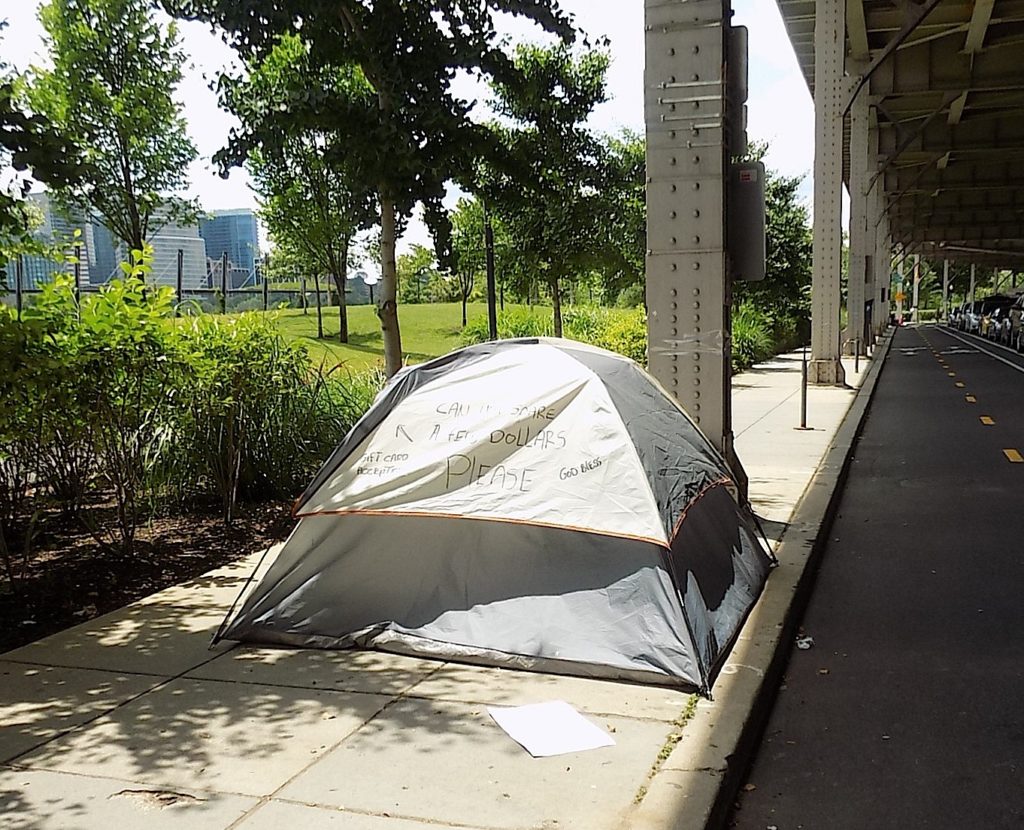Rising Homeless Presence Requires New Focus
By • July 25, 2018 0 656

With the warm weather, the tents of presumably homeless people are increasingly visible along the river walkways, in the new bikeways and under the freeways and bridges of Georgetown. Their belongings often are spread out along the sidewalk; needles and drug paraphernalia sometimes can be seen.
Some of the occupants, who are mainly white men, panhandle. Mostly they sleep. Pedestrians gingerly walk around them or cross the street to avoid going by. Their presence makes many residents and visitors uncomfortable. Some nervously consider the homeless to be a potential source of danger.
Large numbers of homeless living on the streets of Georgetown is not a new
problem. Those Georgetowners who have been dealing with it for years have varying opinions about the increase in recent years. The core question, as always, is: What can be done that hasn’t already been tried?
In fact, dealing with homelessness is a work in progress.
In 2016, a report by the U.S. Conference of Mayors concluded that Washington, D.C., had the highest rate of homelessness of any U.S. metropolitan area. For every 10,000 people in the District, there were 124 without a home. Mayor Muriel Bowser vowed to make homelessness in D.C. “rare, brief and non-recurring.”
The District instituted a Housing First policy for the chronically homeless that prioritized finding housing for applicants without demanding sobriety or treatment as a prerequisite. The idea was that housing would give them safety and some stability, ideally putting them in a better mental condition to confront their problems.
A report published May 9 by the U.S. Conference of Mayors found that, for every 10,000 D.C. residents, 99 are homeless — a 20-percent decrease. On June 13, Mayor Bowser allocated $103 million to produce and preserve housing for 1,700 more street dwellers. In addition, Georgetown Ministry Center has expanded its vital programs, which provide weekly meals, overnight housing, showers, clothing and even computers at the Grace Church location and at other churches and Georgetown community organizations.
But this obviously is not enough to help the many mentally challenged members ofGeorgetown’s homeless community. Like so many other heartbreaking social issues in America (gun violence, domestic and child abuse, suicide, etc.), the mental health factor is key. The new focus in helping the homeless in Georgetown needs to be on dealing frankly and vigorously with this underlying issue.

